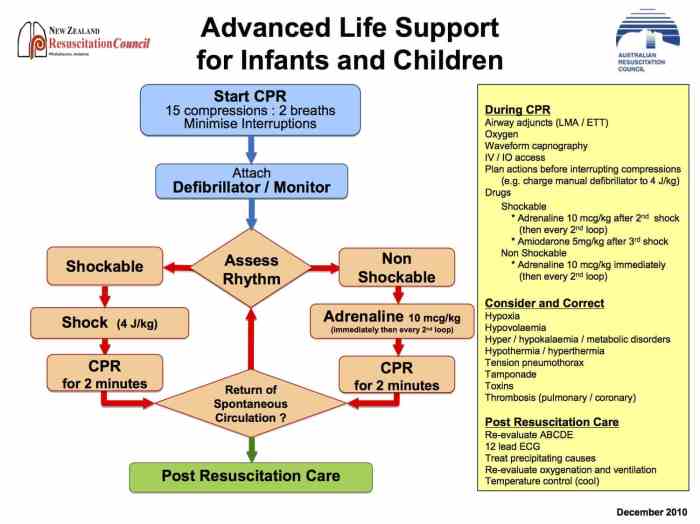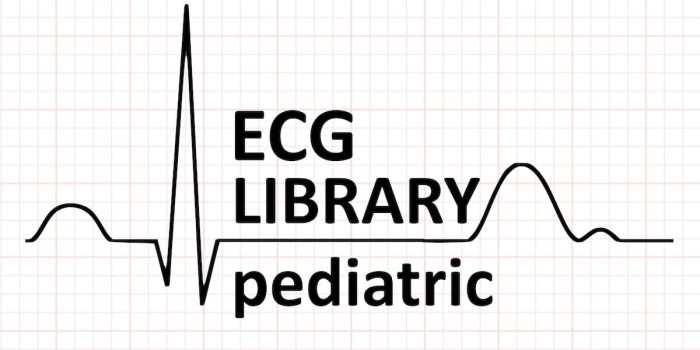
Pediatric telehealth has emerged as a groundbreaking solution in modern healthcare, offering a unique blend of accessibility and technological innovation. This method allows parents and caregivers to connect with healthcare professionals from the comfort of their homes, bridging the gap between traditional care and necessary medical attention.
With advancements in technology shaping the landscape of pediatric care, telehealth has proven essential in addressing the needs of children, especially those facing chronic conditions or mental health challenges. Its significance in providing timely and effective healthcare cannot be understated, as it brings specialized care directly to families, thus enhancing the overall health outcomes for children.
Pediatric Telehealth Overview

Pediatric telehealth has emerged as a vital component in modern healthcare, particularly in the wake of global health challenges such as the COVID-19 pandemic. This innovative approach allows healthcare providers to deliver medical care to children remotely, reducing the barriers of distance and access while ensuring that young patients receive timely and appropriate interventions. The significance of pediatric telehealth cannot be overstated, as it effectively bridges the gap between children and healthcare services, especially in underserved areas.Technological advancements have played a crucial role in shaping telehealth services tailored specifically for children.
The integration of high-speed internet, mobile applications, and secure video conferencing platforms has revolutionized the way pediatric care is delivered. Healthcare providers can now conduct virtual consultations, monitor chronic conditions remotely, and provide ongoing support to families, all from the comfort of their homes. This not only enhances the patient experience but also allows for more efficient use of healthcare resources.
Benefits and Challenges of Implementing Pediatric Telehealth
The implementation of pediatric telehealth presents numerous advantages for both healthcare providers and families. Understanding these benefits is crucial for maximizing the efficacy of telehealth services. Some of the key benefits include:
- Increased Accessibility: Telehealth removes geographical barriers, allowing families, especially in rural areas, to access specialists who may not be available locally.
- Convenience: Parents can schedule appointments around their busy lives, reducing the time and cost associated with travel to healthcare facilities.
- Continuity of Care: Telehealth facilitates ongoing management of chronic conditions, ensuring that children receive consistent follow-up care.
- Reduced Exposure to Illness: Virtual visits limit children’s exposure to potentially infectious environments, particularly important in immunocompromised cases.
Despite these advantages, healthcare providers face several challenges in implementing pediatric telehealth services effectively. Understanding these challenges helps in developing strategies for improvement. Some significant challenges include:
- Technology Barriers: Not all families have access to the necessary devices or reliable internet connections, leading to disparities in service availability.
- Regulatory Hurdles: Compliance with state and federal regulations can complicate the provision of telehealth services, including licensure and reimbursement issues.
- Clinical Limitations: Certain pediatric evaluations require in-person examinations, which can limit the scope of telehealth services.
- Training Needs: Healthcare providers may require additional training to effectively deliver care through telehealth platforms, impacting initial implementation efforts.
“Pediatric telehealth represents a paradigm shift in how we approach child healthcare, making it more accessible and responsive to the needs of families.”
Impact on Child Health
Pediatric telehealth has significantly transformed the landscape of child healthcare by providing innovative solutions to some of the most pressing health issues affecting children today. With the ability to deliver care remotely, it addresses a variety of conditions and enhances access to medical services, especially for those with chronic ailments or mental health challenges.One of the primary advantages of pediatric telehealth is its capability to effectively manage a range of key conditions and diseases.
This modality is particularly beneficial for conditions such as asthma, diabetes, obesity, and various neurological disorders, where regular monitoring and follow-up are crucial for managing health effectively. The integration of telehealth services allows healthcare providers to conduct routine check-ups, provide education, and adjust treatment plans without the need for in-person visits, thus improving overall management of these conditions.
Management of Chronic Conditions
Telehealth has proven to be a game-changer in enhancing access to care for children with chronic health issues. By utilizing virtual consultations, families can connect with specialists regardless of geographical barriers, ensuring that children receive timely interventions that are essential for their health. The following are some key benefits of telehealth for managing chronic conditions in children:
- Regular follow-ups: Continuous monitoring allows for timely adjustments to treatment plans, reducing the risk of complications.
- Convenience: Families can attend appointments from the comfort of their homes, significantly reducing travel time and associated costs.
- Access to specialists: Telehealth facilitates connections to pediatric specialists who may not be available locally, ensuring that children receive the best possible care.
- Education and support: Virtual platforms can provide valuable resources and support networks for families managing chronic health issues.
Management of Pediatric Mental Health Issues
Pediatric telehealth plays a vital role in addressing mental health concerns among children and adolescents. The stigma surrounding mental health often prevents families from seeking necessary help, but telehealth provides an anonymous and comfortable setting for children to receive support. Key aspects of telehealth in pediatric mental health management include:
- Increased accessibility: Children in remote or underserved areas can access mental health services that might otherwise be unavailable.
- Flexible scheduling: Telehealth appointments can be arranged at times that suit the family, reducing barriers to care.
- Anonymity and comfort: Many children feel more at ease discussing their feelings and concerns in a familiar environment, leading to more open communication.
- Continuity of care: Regular virtual appointments enhance the therapeutic relationship and allow for consistent monitoring of a child’s mental health progress.
The continued evolution of pediatric telehealth ensures that children receive the comprehensive care they need, effectively addressing both physical and mental health challenges while enhancing overall health outcomes.
Alternative Treatments and Approaches
The landscape of pediatric care is evolving, especially with the integration of telehealth services. As parents seek more holistic options for their children’s health, the comparison between traditional pediatric treatments and telehealth alternatives becomes crucial. Both avenues offer unique benefits and challenges, making it important to understand how they complement each other within modern healthcare frameworks.When comparing traditional pediatric treatments to telehealth options, it is evident that both have their own strengths.
Traditional treatments often involve in-person consultations, physical examinations, and immediate interventions. These methods are effective for acute conditions requiring hands-on assessment, such as respiratory infections or injuries. Conversely, telehealth provides a flexible platform for consultations, allowing pediatricians to connect with families remotely. This is especially beneficial for managing chronic conditions, follow-up appointments, and routine check-ups, which can often be conducted effectively without the need for physical presence.
Integration of Alternative Therapies
The integration of alternative therapies within pediatric telehealth sessions is becoming increasingly prevalent. Many families are exploring complementary approaches to traditional medicine, such as nutritional counseling, mindfulness practices, and physical therapies. These can be seamlessly incorporated into telehealth sessions, allowing practitioners to provide a well-rounded treatment plan. For example, a virtual consultation can include guidance on dietary adjustments, recommended exercises, or relaxation techniques that support a child’s overall well-being.Incorporating alternative therapies during telehealth appointments can empower families, providing them access to tools that promote healthier lifestyles.
This holistic approach not only addresses immediate health concerns but also fosters long-term wellness by addressing the mind, body, and spirit. As telehealth continues to evolve, the collaboration between conventional and alternative therapies will likely enhance the quality of pediatric care.
Preventive Care Measures in Telehealth
Preventive care is an essential component of pediatric health, and numerous measures can be effectively delivered through telehealth channels. By utilizing remote consultations, healthcare providers can guide families to ensure their children’s well-being proactively.Some preventive care measures that can be efficiently addressed through telehealth include:
- Routine health screenings: Regular checks for growth, vision, and hearing can be initiated virtually, with follow-up referrals as necessary.
- Vaccination guidance: Parents can discuss vaccination schedules and any concerns with pediatricians, receiving personalized recommendations.
- Nutritional advice: Telehealth sessions can include discussions on proper diet and nutrition for growth and development, helping to prevent obesity and associated health issues.
- Mental health check-ins: Telehealth provides a platform for assessing and addressing mental health concerns, promoting emotional well-being through regular support.
- Behavioral counseling: Parents can seek advice regarding behavioral issues or developmental milestones, ensuring children receive the support they need.
The emphasis on preventive care through telehealth can lead to healthier childhoods and reduced healthcare costs over time. By leveraging technology, families can stay informed and proactive in their approach to pediatric health.
Last Point

In conclusion, pediatric telehealth not only redefines access to healthcare for children but also opens new avenues for effective treatment and support. As technology continues to evolve, so too will the methods of delivering care, ensuring that every child receives the attention they deserve, regardless of their location. Embracing this innovative approach can lead to a healthier future for our youngest generation.
Common Queries
What is pediatric telehealth?
Pediatric telehealth refers to the use of digital communication technology to provide healthcare services to children remotely.
How can telehealth benefit children with chronic conditions?
Telehealth improves access to regular monitoring and care, making it easier for families to manage chronic conditions without frequent hospital visits.
Is telehealth as effective as in-person visits?
In many cases, telehealth can be just as effective for certain consultations and follow-ups, particularly for non-emergency situations.
What types of services can be provided through pediatric telehealth?
Services may include routine check-ups, mental health consultations, follow-ups for chronic conditions, and preventive care measures.
Are there any limitations to pediatric telehealth?
Limitations may include the inability to perform physical examinations and the need for reliable internet access for families.





